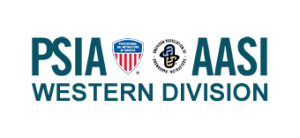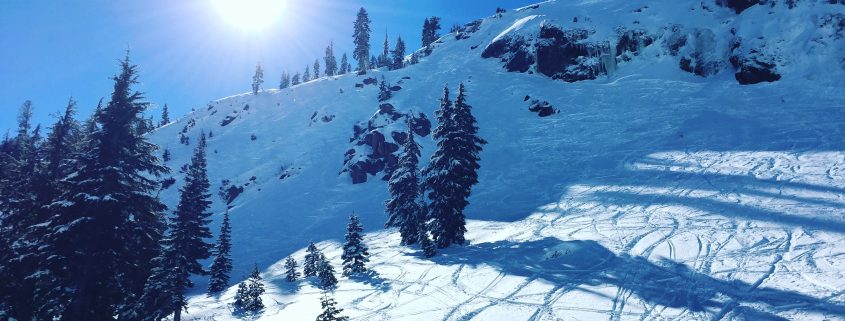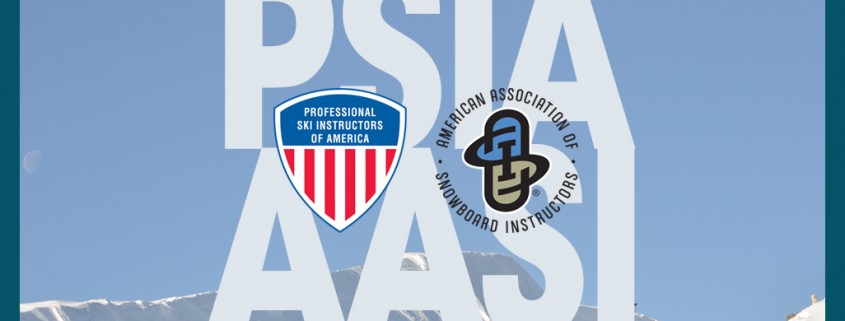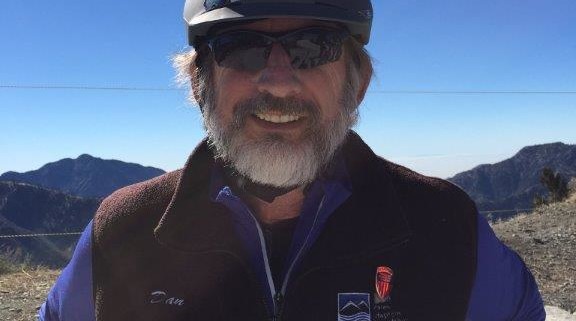There was a great question raised about the new Adaptive Alpine Standards Exam Supplement . The information in the supplement used to be found embedded in the National Adaptive Certification Standards but in an attempt to make the Standards more user friendly, the skiing equivalencies and Adaptive specific teaching and technical skills were removed and now that information is found in this “stand alone” supplement.
The member asked about the change in outrigger use at the “gliding/braking wedge” equivalents for outrigger users, particularly, mono skiers. In the past, we have coached our students to create a slowing/braking action by engaging the friction devices (brakes) of the outriggers and driving the outriggers forward while pressuring downward. This braking technique is rarely used by our sit skiers after the first gravity movements are introduced. If you watch independent sit skiers slow or stop in close quarters (i.e., lift lines, congested areas or narrow spots) they typically utilize a “diverging wedge” with their outriggers. They will turn their outrigger outward so the tips are pointed away from their midline and slowly apply pressure until the slowing/stopping has been achieved.
This outward rotation of the forearms causes the outside edge of the outrigger tips to engage in the snow. By increasing pressure on the outriggers (and/or increasing the outward rotation of the outrigger tip) slowing is augmented. I believe that there are several benefits of the diverging outrigger ‘wedge’ method over the old ‘braking’ method. First, this outward rotation of the outrigger is used by sit skiers throughout their skiing life. Unlike the “hunker down” method that we taught in the past, this “turning the doorknob” movement is the building block of all future outrigger use. It is utilized at all ability levels (beginner – advanced) to create torque (rotary). The ‘wedge’ technique is beneficial for introducing efficient outrigger methods sooner in the student’s progression.
Second, the student will learn the importance of being able to let the outrigger drift across the snow. The ‘wedge’ method teaches our new students to vary (“feather”) pressure on the outriggers as they maintain balance and move across the snow. I think the old brake technique teaches an “all or nothing” pressure movement.
Third, the student is introduced to using the rigger tip’s edge rather than the brake claw to develop friction and create torque. Using the outrigger’s edge allows the user to create torque without as much slowing. I have seen students that learned with the ‘braking’ method that never understood the need to turn the outrigger in the direction they want to go. They simply pushed the brake claw harder into the snow to effect a turn; i.e. torque with significant slowing/friction.
Fourth, it is a natural progression to introducing first turns. With the diverging wedge, when first turns are taught, the student simply keeps one rigger pointed straight (or point both riggers in the direction of the turn) and a turn will occur. Again, they are introduced to a movement that they will use for as long as they mono ski… the braking method is a movement that should be/must be extinguished for the beginner to move to intermediate levels.
And, maybe the biggest benefit, the student is far less likely to become dependent on the stupid brake! If we teach the student’s first sliding movements to utilize the edge of the rigger instead of the brake claw, the student never develops a dependency on the brake. The students I have taught lately start with maybe a 1/4” of brake bolt. By the time they are making linked turns, the brake bolt is gone! It is important to note that this is not an efficient braking method. If you are on steep enough terrain that your student cannot stop, a turn to a stop should be taught.
Check out the great video clips of this technique on the Matrix. (Go to www.thesnowpros.org – sign-up for the Matrix in your ‘member area’ and check out the great Adaptive video clips!)








